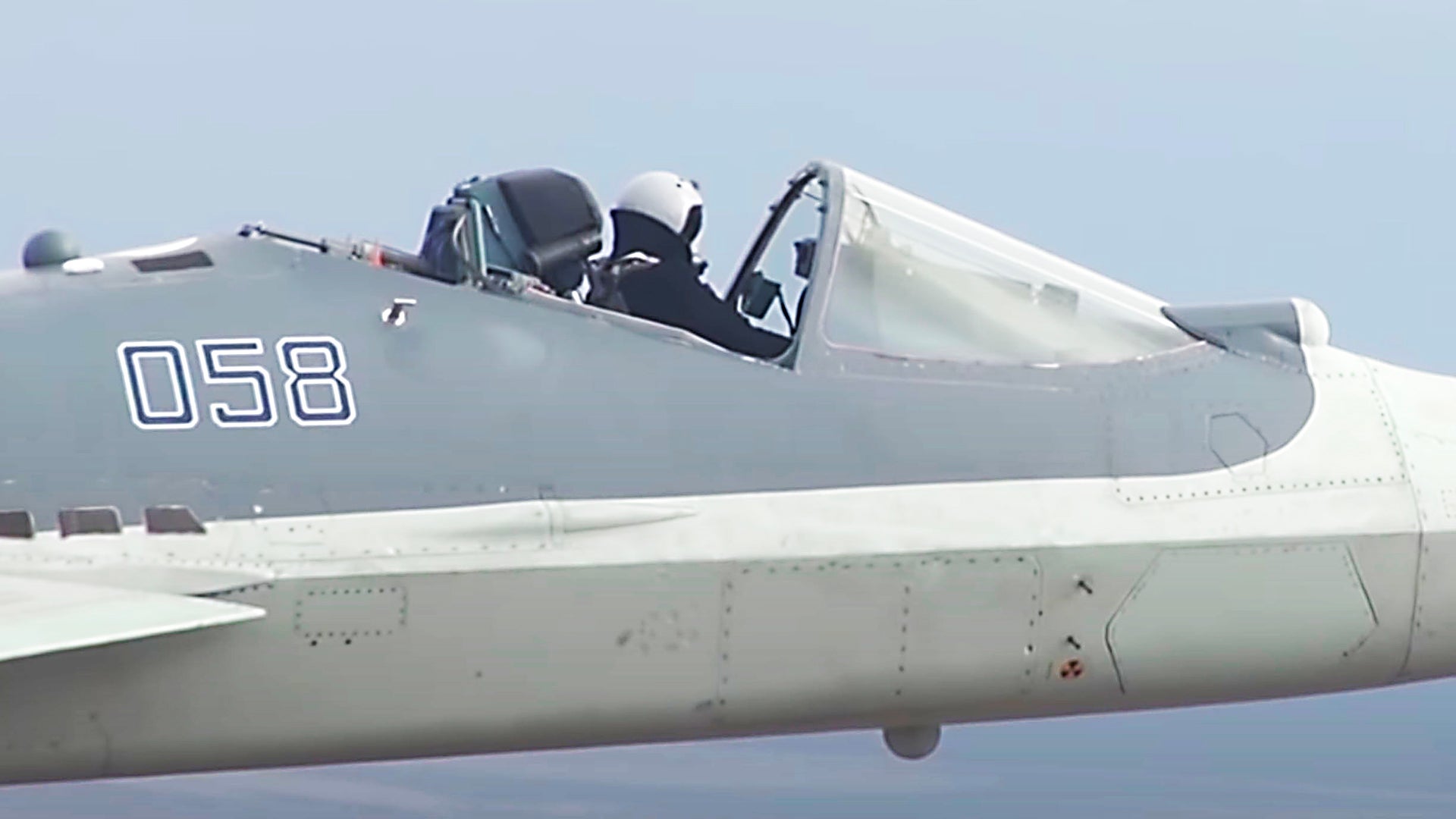The path to getting a fighter jet, or any other military aircraft, into service is a long and arduous one, involving many hours of testing in the air and on the ground to measure each performance parameter and check every characteristic. One of the more unusual tests that a fighter can be put through is flying without a canopy, to better assess the stresses and strains on the aircraft and pilot during an emergency egress procedure. This is essentially what happens in the cockpit in the few seconds between the canopy being jettisoned and the ejection seat blasting the pilot away to safety.
This, it seems, is a type of test that Su-57 Felon bort number “058” took part in, as revealed in a documentary video produced to celebrate the 100-year anniversary of the establishment of the 929th Chkalov State Flight-Test Center at Akhtubinsk, in southern Russia’s Astrakhan region. Also known as T-50-8, this aircraft made its maiden flight from Komsomolsk-on-Amur in the Russian Far East on November 17, 2016. Although this was the eighth prototype, it was actually the seventh to fly, as T-50-7 was completed solely for static tests on the ground.
The full video, seen below, was posted on the Russian Ministry of Defense’s YouTube channel last week and the “cabriolet version” of the Su-57 advanced combat jet appears around the 1:10-minute mark. The video is also worth watching for the rest of its content, which includes a Russian Aerospace Forces Su-35S Flanker fighter launching a very-long-range R-37M air-to-air missile. You can read more about that in this recent article.

The footage clearly shows the test pilot, apparently wearing a non-standard protective flight suit, at the controls of the Su-57 at altitude over Russia, presumably operating from the Akhtubinsk test center. The cockpit windscreen remains in place, while the rear portion has been removed entirely, including the framework.
The Felon’s single pilot is normally provided with a K-36D-5 ejection seat, PPK-7 flight suit, and ZSh-10 helmet, all of which were developed by the Zvezda company specifically for the jet. You can read all about the Su-57’s unique feature-set and design philosophy in this previous War Zone feature.
The test flight recalls a famous sortie flown in the United Kingdom during the development of the Panavia Tornado strike aircraft by British Aerospace (BAe) test pilot Keith Hartley in 1988. According to BAE Systems, the successor company to BAe, that “cockpit habitability trial” was conducted for “testing the emergency escape procedures of the jet.” As a two-seat jet, the Tornado was flown on that occasion with the rear position unoccupied and the navigator’s ejection seat removed.
The Tornado trial was flown at a speed of around 500 knots. Reportedly, Hartley discovered that above 500 knots, the pilot’s life was made distinctly uncomfortable by kinetically heated air hitting the back of the cockpit and then being deflected back toward them.
It is noteworthy that while this type of test mission is no longer flown in the United States, there are occasions when a U.S. military jet is flown without its canopy as the result of an inflight mishap. You can read more about such events in these past War Zone stories, respectively.
Hartley flew the Tornado trial in 1988, six years after the aircraft first entered service. While we don’t have a date for the Su-57 mission, the jet is not yet in frontline service, although examples have already flown some kind of “combat evaluation” in Syria.
While the first production Su-57 was lost in a December 2019 crash, the second aircraft was still under construction as of August 2020. The crash last year was attributed to a failure of the flight-control system and the pilot was able to safely eject.
Those first two production aircraft are part of an order for 76 examples announced by Moscow in May 2019, with deliveries due to be completed by 2028.
In the meantime, the closest the Russian Aerospace Forces have got to operational Su-57s are those pre-production prototypes flown by the Akhtubinsk test center, which is tasked with state evaluation of military aircraft, ensuring they meet requirements before being formally commissioned into service.
As the Su-57 heads toward frontline service with the Russian Aerospace Forces, further trials of the jet and its associated weaponry will undoubtedly ramp up. As long as the ejection system works, as has already been demonstrated, it seems unlikely, that we will see another Felon test sortie that looks quite as bizarre as this one.
Contact the author: thomas@thedrive.com

